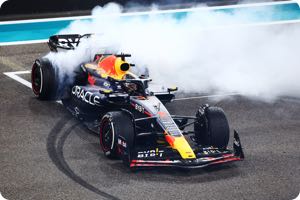JANUARY 10, 2024
Marko confirms RB20's failed crash test
Red Bull’s advisor Helmut Marko has confirmed the first monocoque of the new RB20 failed the FIA-mandatory frontal crash test as we wrote last week. While the team is always tremendously protective of all its internal information and almost never reacts to media reports, the 80-years old Austrian seems unable to resist commenting on every single detail and has now confirmed to a German website this story.
Trying to put a positive sping on the failed crash test, Marko said that, “if we had passed the first crash test, that would be precisely the problem; then we wouldn't have done well” making it clear that the team’s aggressive approach to all technical challenges is one of the reasons for Red Bull’s success.
That has certainly the case throughout Adrian Newey’s career, his cars often failing the initial crash tests, but times have changed, and apart from the delay in the construction of the first chassis that will initially be used for static tests in the factory and will then be sent to a quick shakedown, probably in Silverstone, a few days before being shipped to Bahrain for the only pre-season test, there’s also the cost cap regulations to take into consideration and losing a frontal structure doesn’t come for free – it costs money and money that comes under the cost cap regulations. That’s why this aggressive approach that has been Red Bull’s stance since Newey’s arrival in Milton Keynes, now has heavier costs than in the past.
Clearly no one sends a chassis to be crash tested just on the off chance it will pass it and Red Bull’s calculations were too optimistic. And while there’s time and lap time margin to fix the issue, adding an extra layer of carbon fiber skin – and a bit of weight at the front of the car – it is disingenuous to pretend failing a crash test is actually a good sign.
So far it is known that both Ferrari and Aston Martin have passed the FIA-mandatory crash tests, putting them ahead of Red Bull in terms of their season preparations, as they’re now already able to use chassis number one to do static tests in the factory, even if the aerodynamic development of the new cars and the production of the parts that will be used on the shakedown of both cars will be going on right until the last possible minute.
